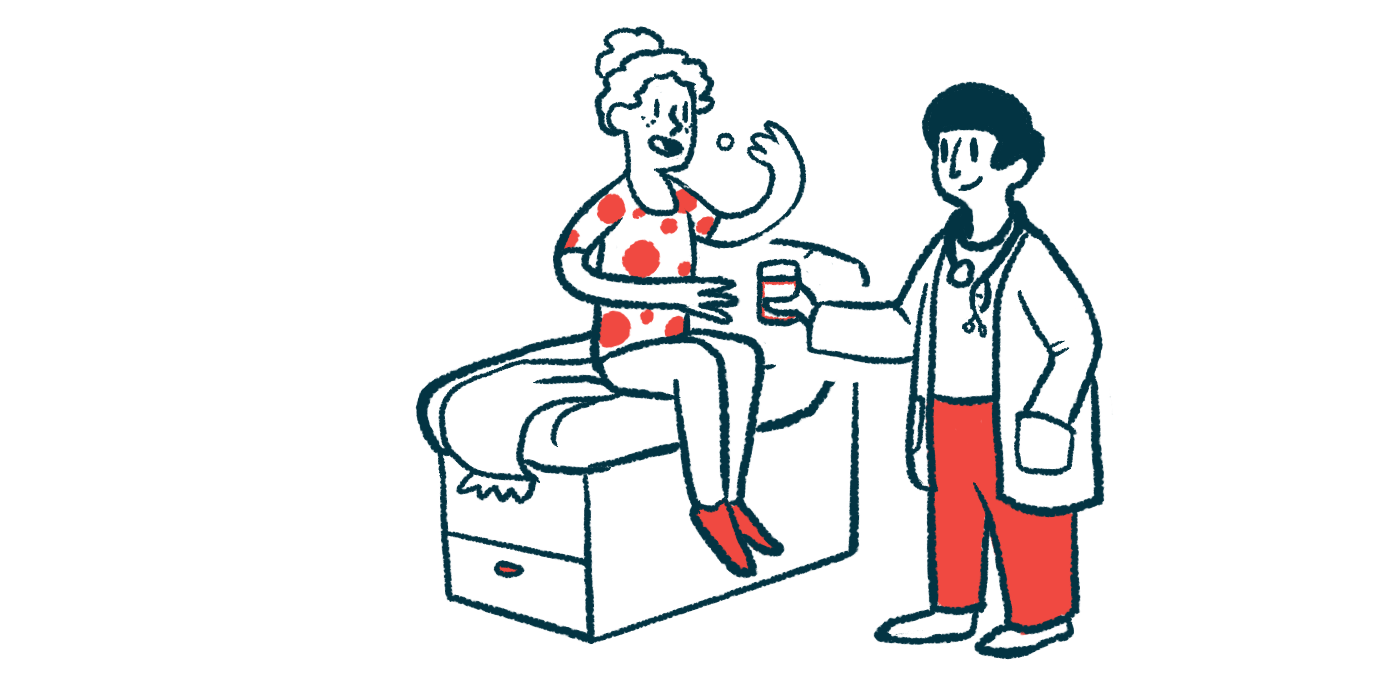PAH patients with or without CTD benefit similarly from Uptravi
Analysis explores oral Uptravi and connective tissue disease

Oral Uptravi (selexipag) provided similar clinical benefits for adults with connective tissue disease (CTD) associated with pulmonary arterial hypertension (PAH) as for those without CTD, according to a health claims database analysis.
PAH patients with CTDs treated with Uptravi in real-world settings had similar risks of disease progression or hospitalization due to PAH or any cause.
While those with CTDs had higher medical expenses due to any cause, there were no differences in medical costs specifically related to PAH, with or without CTDs.
The database analysis, sponsored by Janssen, the company that markets Uptravi, was published in the journal Rheumatology and Therapy, in the study, “Hospitalization Among Pulmonary Arterial Hypertension Patients With and Without Connective Tissue Disease Comorbidities Prescribed Oral Selexipag.”
CTDs are a group of inflammatory conditions affecting the body’s connective tissues, which support, bind, and protect organs. Common CTDs include lupus, scleroderma, and rheumatoid arthritis. PAH, when the pressure in the blood vessels that supply the lungs is abnormally high, can be a serious complication of CTD.
Previous data has shown that people with PAH-CTD usually have more hospitalizations and worse survival than those with idiopathic PAH (IPAH), meaning PAH of unknown cause. Moreover, several clinical trials show that PAH therapies are less effective in PAH-CTD than IPAH.
Uptravi is an approved PAH therapy, given orally or by infusion into the bloodstream (intravenously), to delay disease progression and reduce the risk of hospitalization. Its efficacy was supported by data from the Phase 3 GRIPHON (NCT01106014) trial, which enrolled 1,156 PAH patients, including 334 with CTDs.
Among those with PAH-CTD, Uptravi delayed the time to symptom worsening or death by 41%, slowed disease progression, and reduced hospitalizations. Its benefits were consistent with all GRIPHON participants, including those with idiopathic PAH and heritable PAH.
Despite these positive clinical trial findings, there is limited information about Uptravi’s benefits in real-world settings for PAH-CTD patients.
The CDM database
To address this information gap, Janssen researchers collected and analyzed data from Optum’s de-identified Clinformatics Data Mart Database (CDM), a U.S. health claims database. Continuous health plan enrollment was required for at least 12 months before the initial Uptravi database entry (baseline).
A total of 317 PAH patients were treated with oral Uptravi, with CTDs diagnosed in 80 cases (15.2%). At baseline, PAH-CTD patients were slightly younger, predominately female, and lived mostly in the southern U.S., than PAH without CTDs.
High blood pressure, heart disease, and interstitial lung disease (lung tissue scarring) were the most common co-existing baseline medical conditions in the PAH-CTD group. These patients also had higher average total healthcare costs for any reason than those without CTD during the 12-month baseline period.
Participants were followed until they stopped Uptravi, withdrew from their health plan, died, were diagnosed with chronic thromboembolic pulmonary hypertension (PAH caused by blood clots), or until the study’s end. Disease progression, healthcare utilization, and medical expenses were examined.
During follow-up, PAH-CTD patients treated with Uptravi had a similar risk of PAH-related hospitalization than those without CTD after adjusting for baseline factors that may influence the results. This included age, sex, geographic region, baseline oral Uptravi regimen, apnea (breathing impairment during sleep), obesity, and interstitial lung disease.
Similar costs for patients
No significant differences were found in total PAH-related medical costs between patients with and without CTD. In contrast, total medical expenses (inpatient plus outpatient) for any cause, as well as individual inpatient and outpatient costs, were higher among PAH-CTD patients, driven mainly by emergency room costs due to any reason.
With Uptravi treatment, PAH-CTD patients also had a similar risk of hospitalization for any cause, or risk of disease progression, during follow-up versus PAH without CTDs, after adjustments.
“The results from this study corroborate the findings of the GRIPHON post hoc [after-the-fact] analysis of PAH-associated CTD patients and the benefit associated with [Uptravi] use in PAH-CTD patients,” the researchers concluded.








